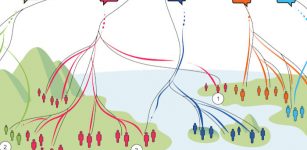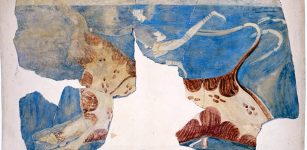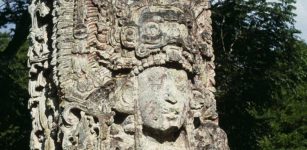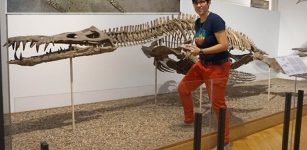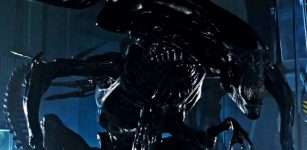Baby Pterodactyls Had A Remarkable Ability – They Could Fly From Birth
Eddie Gonzales Jr. – MessageToEagle.com – Pterodactyls, extinct flying reptiles, had a remarkable ability—they could fly from birth. The importance of this discovery is highlighted by the fact that no other living vertebrates today, or those in the history of the fossil record, had this ability.
Previously, pterodactyls were thought only to be able to take to the air once they had grown to nearly full size, like birds or bats. This assumption was based on fossilized embryos of the creatures found in China that had poorly developed wings.
 Pterodactyls in Flight – Spencer Sutton/Science Source
Pterodactyls in Flight – Spencer Sutton/Science Source
Now, researchers Dr. David Unwin, a University of Leicester palaeobiologist who specialises in the study of pterodactyls, and Dr. Charles Deeming, a University of Lincoln zoologist who researches avian and reptilian reproduction, have disproved this hypothesis.
They compared these embryos with data on prenatal growth in birds and crocodiles, finding that they were still at an early stage of development and a long way from hatching.
The discovery of more advanced embryos in China and Argentina that died just before they hatched provided the evidence that pterodactyls had the ability to fly from birth.
“Theoretically, what pterosaurs did, growing and flying, is impossible, but they didn’t know this, so they did it anyway,” Dr. David Unwin said in a press release.
Another fundamental difference between baby pterodactyls, also known as flaplings, and baby birds or bats, is that they had no parental care and had to feed and look after themselves from birth.
A pterosaur nesting ground. On a summer day in the Early Cretaceous 124 million years ago, a hatchling (flapling) pterosaur emerges from the sand and gazes at the sky for the first time. Other hatchlings lie exhausted from their struggles or crawl to safety on trees fringing the beach. The less lucky are caught and eaten by small theropods (Sinosauropteryx). From the safety of the trees flaplings make their maiden flights. Inexperience means that many are killed in accidents or storms, their bodies drifting out into nearby lakes where a tiny few are preserved as fossils in fine muddy sediments that now form rocks that crop out in Liaoning Province China. Illustration by James Brown.
Their ability to fly gave them a lifesaving survival mechanism which they used to evade carnivorous dinosaurs. This ability also proved to be one of their biggest killers, as the demanding and dangerous process of flight led to many of them dying at a very early age.
The research has also challenged the current view that pterodactyls behaved in a similar way to birds and bats and has provided possible answers to some key questions surrounding these animals. Since flaplings were able to both fly and grow from birth, this provides a possible explanation as to why they were able to reach enormous wingspans, far larger than any historic or current species of bird or bat.
How they were able to carry out this process will require further research.
“Our technique shows that pterosaurs were different from birds and bats and so comparative anatomy can reveal novel developmental modes in extinct species,” Dr. Deeming added
Written by Eddie Gonzales Jr. – MessageToEagle.com Staff





